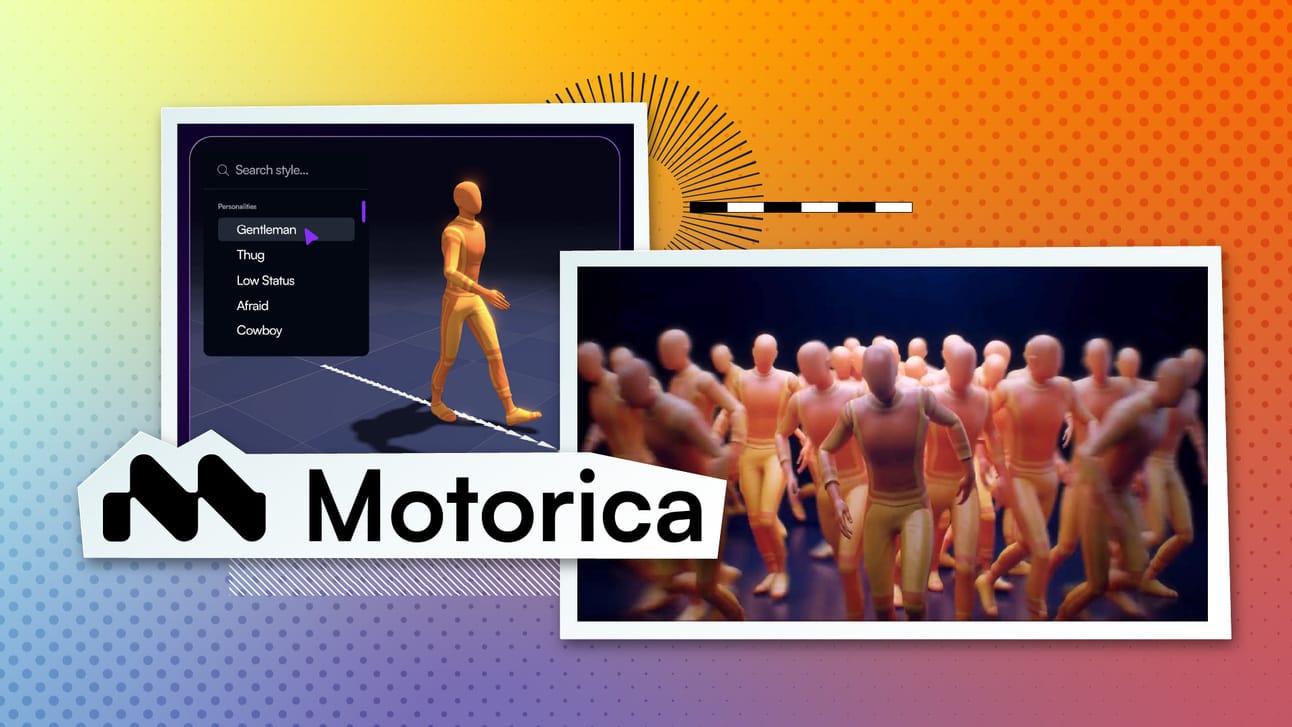Stockholm-based Motorica has closed a €5 million seed funding round to expand its generative AI platform for character animation, with early studio deployments showing 99% reduction in animation time and workflows that are 200x faster than traditional motion capture processes.
The funding round, led by Angular Ventures with participation from Luminar Ventures, positions Motorica to scale production of what they claim is the industry's first AAA-quality generative AI animation platform. The technology is already being used in live production environments by major studios, representing a significant shift from prototype to production-ready tool.
Studio Workflow Transformation: Rather than replacing animators, Motorica's approach targets the technical grunt work that traditionally consumes 70% of an animator's time.
Willem Demmers, CEO of Motorica, frames the company's mission around workflow liberation rather than disruption. "Traditionally, animators spend 70% of their time on technical grunt work and only 30% on actual creative performance. Motorica flips that," Demmers explains. "By automating the grind - things like tedious keyframing for basic locomotion - we let creators focus on what matters: storytelling, emotion, and innovation."
The platform integrates with industry-standard tools including Unreal Engine, Maya, Unity, and Blender, with particular strength in motion matching capabilities that enable realistic animation for large character populations in complex gameplay scenarios.
Research Foundation Meets Commercial Reality: The technology stems from academic breakthroughs in motion synthesis that began in 2019.
Motorica's core IP originated from research by Gustav Henter and Simon Alexanderson, who developed what they describe as the world's first deep generative model for motion synthesis. The company launched in 2020 to prototype this research, officially emerging from stealth in 2023 when the researchers partnered with serial entrepreneur Willem Demmers.
The company operates its own motion capture studio in Stockholm and has built what they characterize as one of the largest proprietary motion datasets globally, captured with professional actors to ensure biomechanical accuracy and cinematic quality performance.
Maxi Keller, animator for The Last of Us: Part II and Call of Duty: WWII, provided validation for the technology's practical applications: "Motorica is the best tool out there for locomotion animation and Motion Matching. It delivers better, more consistent results than mocap as they give you exact control on acceleration and target speed, and more."
Production Scale Impact: Studios report dramatic timeline compression, with one estimating three years of animation work completed in four days.
The platform's production capabilities extend beyond speed improvements to include:
More expressive and stylistically diverse characters generated using smaller datasets
Substantial cost savings on motion capture sessions and post-processing requirements
Full compatibility with existing DCC software and game engines
David Peterson, Partner at Angular Ventures, positioned the investment around foundational technology potential: "This platform has the potential to influence everything from how characters move in games and virtual worlds to how machines understand and replicate human motion in robotics, XR, and beyond."
Expansion Roadmap: The funding will support integration expansion, data infrastructure growth, and strategic partnerships.
Near-term initiatives include expanding SDK and API integrations for game studios and virtual production teams, growing the company's motion library with controllable tools for fighting, sports, and stylized movement, and launching partnerships with game engines and VFX studios.
The company plans to hire across engineering, animation, data, and customer success roles to support scaling customer adoption across key verticals.
The Final Cut: As AI animation tools mature from experimental to essential, Motorica's artist-first approach may determine whether the technology enhances or replaces human creativity in production pipelines.
The company's emphasis on augmenting rather than automating creativity represents a critical positioning decision in an industry increasingly concerned about AI's impact on creative roles. With AAA studios already integrating the technology into live production environments, Motorica's approach of eliminating technical bottlenecks while preserving artistic control could establish the template for how AI animation tools integrate into established workflows.


